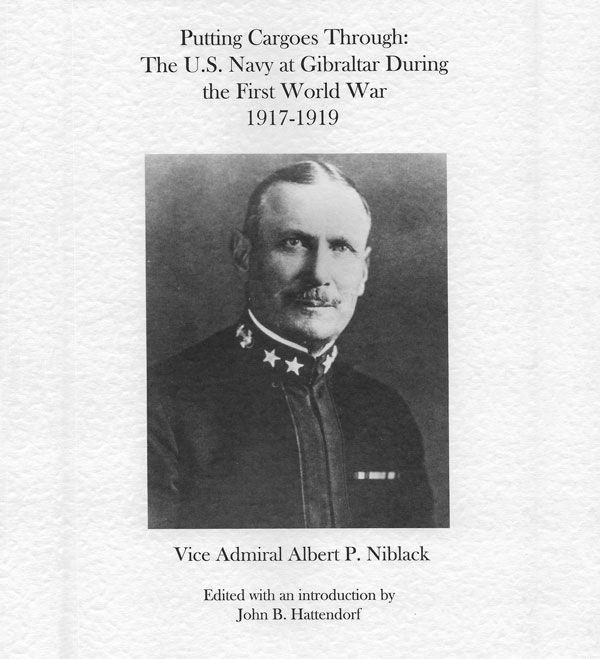
Putting Cargoes Through. The U.S. Navy at Gibraltar during the First World War 1917-19. By Vice Admiral Albert P. Niblack. Edited with an introduction by John B. Hattendorf. Calpe Press, Gibraltar 2018. 168 Pages, Illustrated. Available from Calpe Press. 7 Fountain Ramp, Gibraltar. www.calpepress.com.
Reviewed by Greg Swinden
In April 1917 the United States entered World War I and quickly committed her sea, land and air forces to the fight. Amongst some of the first US forces to arrive in the European theatre were naval forces that commenced operations from Gibraltar in August 1917. In late November of that year those forces came under the command of Rear Admiral Albert Niblack, USN.
Putting Cargos Through is Niblack’s previously unpublished manuscript describing the operations conducted by the US Navy from Gibraltar during his time in command up until early 1919. It was written, in the early 1920’s, as an article for the United States Naval Institute (USNI) Journal but never published due to its length (25 short chapters). The manuscript was eventually deposited in the US National Archives where it sat for several decades until discovered, edited by the eminent Naval War College historian John B. Hattendorf , and published by Calpe Press of Gibraltar. A book therefore 100 years in the making.
Niblacks’s description of US Navy operations revolves around the convoy system which he correctly attributes to defeating the U-Boats, which in April 1917 had Britain on the brink of economic collapse, and the role the US Navy played in getting the convoys through into the western Mediterranean. This theatre of war is often seen as a backwater, compared to the Atlantic and the North Sea, but the sea lines of communication here were equally vital supplying the Allied campaigns in Palestine, Salonika and northern Italy as well as pushing supplies into Southern France for movement north rather than clogging the French Atlantic coast ports.
He also differentiates between the troopships/liners which due to their high speed could sail unescorted and the other 90% of the shipping which were slower cargo vessels bringing the ‘bullets, beans and black oil’ to the front line. The safe passage of troops was a political necessity yet it was the loss of cargo vessels that was causing the Allies to lose the war.
Despite the passage of time, since the manuscript was first written, current Maritime Trade Operations staff in western navies would easily recognise the doctrine used in 1917-1919 as comparable to that used today – particularly the briefing of ships masters and the need for adherence to advised routes to follow.
Also of particular interest is the US instigation of the Naval Overseas Transport Service which saw all US merchant ships equipped with at least two deck guns, manned by USN personnel, as well as placing uniformed signalmen and radio operators on board. The shortage of suitable destroyers also saw several ships taken up from private ownership and manned by new recruited seaman and USN Reserve officers.
Niblack also examines command and control, which at times was an issue with the senior British naval officers based in Malta, as well as the morale and welfare issues of operating from Gibraltar, ship maintenance regimes and logistics difficulties as well as the use of liaison officers when dealing with his British, French and Italian counterparts.
While at times Niblack’s narrative can be a little repetitive and rambling the overall descriptive nature of the 18 months of convoy operations to, through and beyond Gibraltar is worth the read particularly for those interested in current day Maritime Trade Operations – as the old saying goes “If you want an new idea then read an old book”.
This article was first published by The Great Circle (Journal of the Australian Association for Maritime History).



